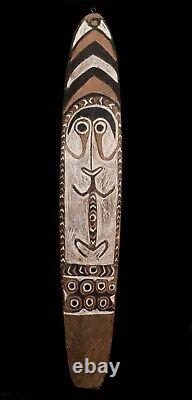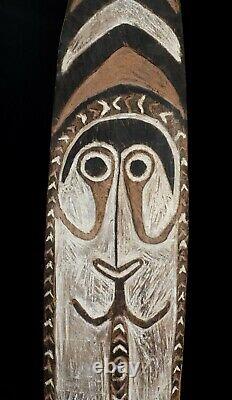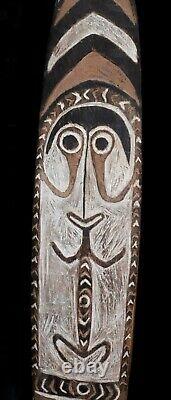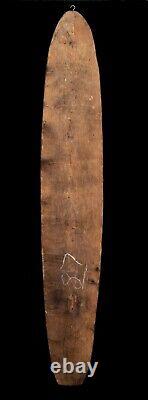Large Gope Board Giobari Island Papuan Gulf Papua New Guinea





Large Gope Board Giobari Island Papuan Gulf Papua New Guinea. The signature art form from the Papuan Gulf was undoubtedly the spirit board.
These oblong two-dimensional objects were known by different names such as a gope, koi, or hohao, depending on the region in which it was made. Carl Shipman was an astute collector of Aboriginal and Oceanic material in the 1960s.
He was also a self published author on the subject, parts of his collection are in the National Museum of Victoria and National Gallery of Australia, La Trobe University ethnographic collection and he also made a significant contributions to the Israel Museum , Jerusalem, Israel. The gope board has a raised relief design that has been painted in black with the sunken ground painted in white This dancing figure on the board is carved in a style characteristic to those of Kerewa people. They live on Goaribari Island (also spelt Giobari) at the delta of Kikori adn Omati River.In the past, the primary focus of religious and artistic life in the region was on powerful spirits (imunu). Each imunu typically was associated with a specific location in the landscape, rivers, or sea, and was linked to the particular clan within whose territory it dwelt. The gope boards served as a dwelling place for an individual imunu, whose image appears on it. Gope boards were also regarded as protective beings that ward off sickness and other illnesses.
Villages formerly had large communal mens houses divided into cubicles, each allotted to a particular clan or subclan. Every cubicle contained a clan shrine, which housed the spirit boards, figures, human and animal skulls, and other sacred objects associated with the clans various imunu. This board is in good condition circa 1960. 162cm long x 26cm wide. Please view the photos carefully as they make up an important part of the.
The item "Large Gope Board Giobari Island Papuan Gulf Papua New Guinea" is in sale since Thursday, December 31, 2020. This item is in the category "Antiques\Ethnographic\Pacific Islands & Oceania".
The seller is "rath22" and is located in Brighton, VIC. This item can be shipped worldwide.
